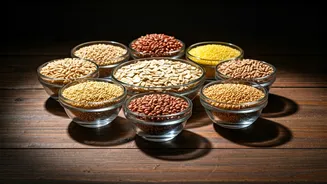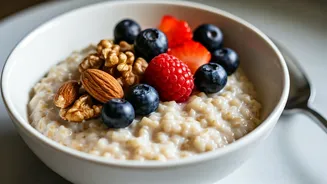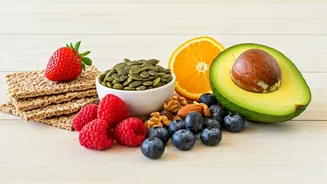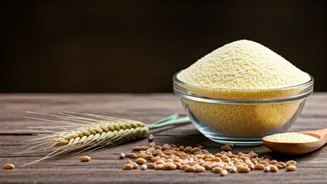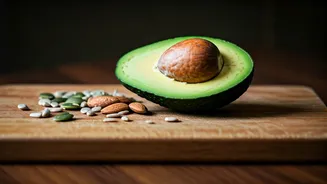Embracing Diabetes-Friendly Grains
Managing blood sugar levels is a crucial aspect of maintaining overall health, especially for those with diabetes. Blood sugar spikes can lead to various
health complications. Fortunately, several grains are known for their ability to help regulate blood sugar and promote weight management. The inclusion of these grains into your daily diet can be a proactive step towards a healthier lifestyle. The dietary choices you make play a significant role in managing this condition, helping you lead a healthier life, and avoiding complications.
Whole-Grain Wonders Unleashed
Many whole grains stand out as excellent choices for individuals looking to manage their blood sugar. They typically contain high fiber content, which helps slow down the absorption of sugar into the bloodstream, thus preventing sudden spikes. Quinoa, for instance, is a complete protein and a good source of fiber, making it an excellent addition to any diabetic-friendly diet. Brown rice is another favorable option due to its high fiber content and lower glycemic index compared to white rice. Oats, particularly steel-cut or rolled oats, are also effective due to their soluble fiber, which aids in stabilizing blood sugar levels. These grains offer a wealth of nutrients and are essential for people with diabetes.
The Power of Ancient Grains
Certain ancient grains are often overlooked but offer significant health benefits. These grains can play a beneficial role in blood sugar control. Farro, a grain with a nutty flavor and chewy texture, is a good source of fiber and protein. This can aid in stabilizing blood sugar. Spelt, another ancient grain, provides a good source of fiber and nutrients, making it a valuable addition to a balanced diet. Furthermore, incorporating amaranth into your diet provides a significant amount of fiber and is rich in nutrients. Ancient grains are generally minimally processed, helping retain more of their natural nutrients and fiber content, which contributes to a more controlled blood sugar response.
Rethinking Modern Grains
Modern grains, when chosen carefully, can also be part of a balanced diet for managing blood sugar. It's often about the way they're prepared and combined with other foods. Whole-wheat bread, for example, can be consumed in moderation, provided it's made from whole wheat flour, which contains more fiber compared to white bread. Similarly, wild rice, which isn't technically a grain but a seed, offers a good source of fiber and antioxidants. Even couscous, a type of pasta made from semolina, can be part of a diabetic-friendly meal plan, especially when combined with high-fiber vegetables and lean proteins. Careful selection and portion control are key when including modern grains in your diet.
Meal Planning and Control
Beyond grain selection, proper meal planning and portion control are essential for blood sugar management. Pairing grains with protein and healthy fats can help slow down the absorption of sugar, preventing spikes. For instance, a meal of quinoa with grilled chicken and vegetables provides a balanced mix of nutrients that will not dramatically impact blood sugar levels. Using the glycemic index (GI) and glycemic load (GL) of foods can help in planning meals. Low-GI grains, like most of those mentioned, are preferable. Paying attention to portion sizes and the timing of meals can also significantly impact blood sugar control. By adopting these strategies, individuals with diabetes can enjoy a variety of grains in their diet while maintaining good health.


